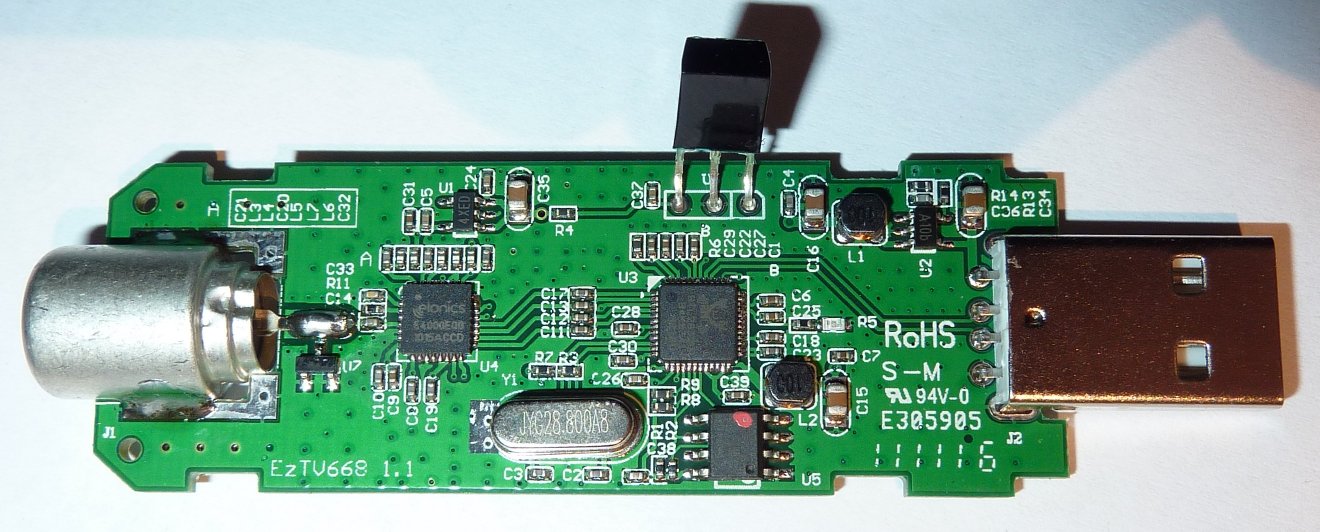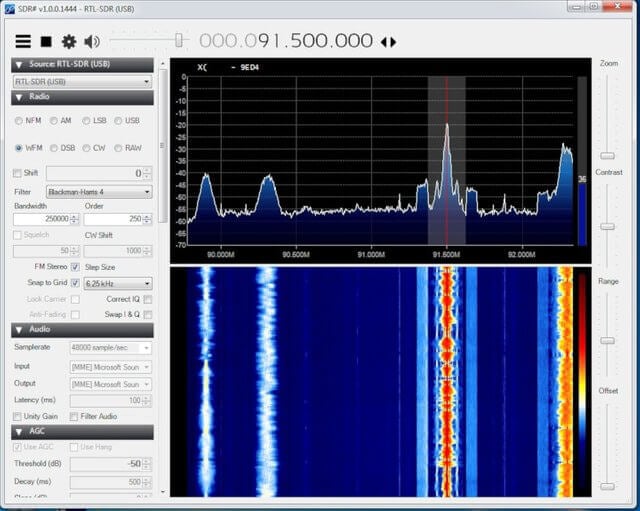Download of SDRSHARP UPDATE VERSION 4.0.exe (SDRSHARP UPDATE VERSION 4.0.exe (external link: SF.net): 6,760,846 bytes) will begin shortly.If not so, click link on the left. Download Gqrx SDR. Gqrx is distributed as source code as well as binary packages. Built on Mac OS X 10.11 but might work up to 10.15 (SourceForge) On Mac you can also install the latest version through Macports and probably also other package managers like Homebrew. I can only provide very limited support for Mac OS X. Search for: Search.
SDRsharp on a 64bit version of Windows 10
#19534 Has anyone on here got a RTL SDR dongle working with SDRsharp on a 64bit version of Windows 10? I’ve downloaded the 64bit version of SDRsharp from Airspy.com, installed the driver (rtl 2832u) using Zatag and it appears OK in device manager. Unfortunately the 64 bit version of SDRsharp crashes when you try to start it and the 32 bit version starts but doesn’t see the dongle. Found a reference to a fix for the 32 bit version (updated version) but not 64 bit. Any suggestions from someone that has actually got this to work? I don't have access to a 32bit PC or Windows 7 or 8. |
#23228 Win 10 x64 here, Installed drivers as normal with Zadig, launched SDR# 1583 All worked as expected. Have you tried running as admin? |
#23333 Make sure you have Microsoft .NET version 4.6 installed. If so, then strip out any SDR# plugins to let it run as cleanly as possible. Are any messages displayed when it crashes? Anything in the Windows Event Viewer that might shed light on it? Is there an error log file in the SDR# folder? I forget its name but SDR# writes a text file when it senses it is crashing. Good luck. |
CubicSDR v0.2.4 release
CubicSDR v0.2.4 release builds are now available on the CubicSDR GitHub Releases page:

Changes since 0.2.3 include:
- – WAV file header bug fix
- – Bookmark UI fixes
- – Right-drag waterfall now adjusts visual gain
- – Minor UI/crash fixes
- – Update to wxWidgets 3.1.1
- – Add LimeSDR device support (untested)
- – Updated AppImage build base to Debian 8
CubicSDR v0.2.3 release
CubicSDR v0.2.3 release builds are now available on the CubicSDR GitHub Releases page:
Changes since 0.2.0 include:
- – Audio Recording (Hover + R to record, Shift-R to record-all)
- – Antenna Selection support in settings menu
- – Import and export bookmarks
- – Settings and other menu improvements
- – Many crash fixes, performance improvements and tweaks (thanks to Vincent Sonnier)
- – Updated RtAudio
- – Updated Hamlib, Liquid-DSP for windows
- – SoapySDR updated to 0.6.x
- – Visual layout tweaks
- – Increase demodulator waterfall resolution
- – Theme refresh fixes
- – Threading improvements
- – About Dialog
- – Save sizer sash positions
- – Hamlib serial port auto-detection
- – Bookmarks Panel
- – – Bookmark Active and Recent modems
- – – Bookmark View Ranges
- – – Group and arrange bookmarks
- – – Drag & Drop to create / move bookmarks
- – – Quick search by keywords
- – – Show / hide bookmarks in display menu

CubicSDR v0.2.0 release
– RTL-SDR
– AirSpy
– SDRPlay** (only AppImage supported for Linux currently)
– HackRF
– BladeRF
– Red Pitaya
– Audio Devices
– UHD (OSX / Windows Only)
– RFSpace (OSX Only)
– Adds support for ranged center frequency input (spacebar, numeric trigger) for manual view control
– – Use the dash ‘-‘ key between two frequencies when manually entering center frequency to set the view
– BladeRF bandwidth patch
– Better stream init handling
– Menu cleanup / refactoring
– – Unify Font / Theme to Display menu
– Added modem settings UI for analog modems
– – Added FM Stereo de-emphasis filter option
– – Modem Audio Out part of modem settings UI now
– – Modem settings can be hidden and will save view state
– Update SoapySDR to 0.5.x
– Add flatpak build for Linux
– Additional crash fixes and threading improvements ( thanks to @vsonnier )
– Additional character support for sessions / labels ( thanks to @vsonnier )
– Additional high resolution fonts, better fonts sizes for UI scaling, general improvements ( thanks to @vsonnier )
– Gain UI and font scale improvements
– Active Zoom / View states now saved with session file
– Updated internal libraries ( thanks to @vsonnier )
– Enable peak hold for modem view ( thanks to @vsonnier )
– Edit modem labels with ‘E’, saved to session ( thanks to @vsonnier )
– Font support for additional characters ( thanks to @vsonnier )
– Add AirSpy and UHD support for windows
– Add UHD support for Linux
– Save sample rate, gain levels and AGC state per-device
– Fix issue with intel graphics drivers
– Sample rate now selectable from device dialog
– Add NBFM mode at 12.5KHz default
– Mouse wheel improvements for meter UIs, focus fixes for Windows 7
– Gain meters now support mouse wheel
– Crash fixes and thread cleanup by @vsonnier
– Hamlib now included in releases by default
– Adds “Rig Control” Menu
– – Per-rig SDR-IF control
– – Model / Serial Rate / Control port configuration per-rig
– – Rig control toggle
– – Follow rig control toggle
– – Floating center frequency toggle
– – Rig modem tracking toggle
– New keyboard handler
– Hover and start typing a number for numeric entry (alternate to space).
– Waterfall lines-per-second, spectrum averaging, gain values can now be set via direct-entry (space, number)
– Hover help tips on by default for new users, experienced can disable in settings menu
– Tab / Shift-Tab now selects next / previous modem
– Solo mode ‘S’ can now solo a modem’s output, solo follows modem focus
– Squelch break will automatically focus in solo mode
– ‘]’ and ‘[‘ keys will now nudge the active modem by the current frequency snap value (or 1Hz if no snap)
– – Hold shift to nudge at half the snap value, i.e. 1KHz snap + SHIFT – ] = 500Hz nudge
– High-res graphics switching and discrete graphics enable for OSX
– Add swap I/Q setting for all devices
– Add delta-locked modems; delta-locked modems will remain locked relative to the center frequency for band-plan sessions
– Add auto-zero for squelch, right click to set above current signal level (thanks @george-viaud)
– – Fine tune squelch /w mouse wheel
– Start / Stop device on demand from menu
– Rewrite/optimize of SSB modems
– Fixes USB and LSB signal drift
– SoapyRedPitaya for Red Pitaya support
– Improved SDR thread performance and stream handling
– SDR Device dialog options now synchronize with app
– Refresh for SoapySDR modules with variable and dependent settings
– Improvements for low-bandwidth such as reduced FFT resolution
– SoapyAudio for audio input devices / VLF
– Improved side-band suppression for SSB modes
– Peak Hold feature
– Fix for SSB manual bandwidth entry
– Frequency and modem placement preview (with snap) in spectrum view
– Device name editing in SDR Devices dialog
– Can now refresh SDR Devices dialog for hot-swapping devices
– Can now add SoapySDR devices manually (i.e. RedPitaya, RFSpace)
– Fix for waterfall halt / overload crash when exceeding CPU limits
– Font size and layout size improvements
– Can now center frequency on modem or hovered frequency with ‘c’
– Sessions now save current sample rate
Enjoy!
CubicSDR v0.1.20-alpha release

– RTL-SDR
– HackRF
– BladeRF
– SoapyRemote
– SDRPlay (Requires copying DLL, see note on release page)
– AirSpy
– RFSpace
– UHD
– General UI Improvements, many crash fixes
– Manual gain control (just disable “automatic gain” in the settings menu)
– Visual gain control by right-dragging up/down on the spectrum (or shift+up/down arrow)
– SDR Device configuration dialog on startup with saved preferences
– SoapyRemote support allows any supported device to work over a network
– Rework of waterfall/spectrum Zoom functionality, improved detail and performance
– Eliminated aliases crawling across spectrum during zoom
– Main areas of display can now be resized, just drag the dividers between them
– LSB/USB tuning and bandwidth improvements, better bandwidth defaults overall
– Internal rewrite of modem code into distinct classes replacing monolithic demodulator
– Menu options automatically adjust to the active device settings and ranges (including custom device settings unknown to CubicSDR!) thanks to SoapySDR device argument and setting queries.
– Liquid-DSP PFB Channelizer is now utilized to allow for decent performance while using many VFOs at high input bandwidths (20+ WBFM stations at once on a HackRF can be done easily 🙂
CubicSDR v0.1.4-beta released
CubicSDR v0.1.4 beta release is now available on GitHub. Includes new audio spectrum visuals, waterfall and spectrum speed control, I/Q output mode, mute, performance improvements and more.
Download Sdrsharp Windows 10 64-bit
CubicSDR v0.1.4-beta quick demonstration video:
